I am trying to build a complex bar plot that has categories to distinguish. Here is the data frame
Treatment DCA.f Megalorchestia Talitridae Traskorchestia
1 A (-Inf,0] 8.000000 4843.6667 1394.0000
2 U (-Inf,0] 21.000000 2905.3333 483.6667
3 A (0,0.1] 25.000000 254.8571 41.0000
4 U (0,0.1] 30.714286 691.0000 360.1429
5 A (0.1,0.2] 35.400000 1355.2000 127.4000
6 U (0.1,0.2] 104.400000 705.4000 50.2000
7 A (0.2,0.3] 3.857143 649.7143 633.4286
8 U (0.2,0.3] 10.857143 510.4286 268.7143
9 A (0.3,0.4] 13.444444 981.5556 207.5556
10 U (0.3,0.4] 10.666667 1567.5556 417.5556
11 A (0.4, Inf] 0.000000 3.0000 1.2000
12 U (0.4, Inf] 0.000000 3.8000 0.0000
I want a barplot that for each DCA.f group shows 6 values for the three organisms categories (the right three columns), separated by treatment (A v U). So if you read the bottom of the plot there would be a big category for DCA.f and then with in that category there would be six bars. Two for each genera color coded by treatment. And then repeated for all DAC.f. I have looked through many of the other barplot posts and they have not gotten me anywhere.
Any help?
